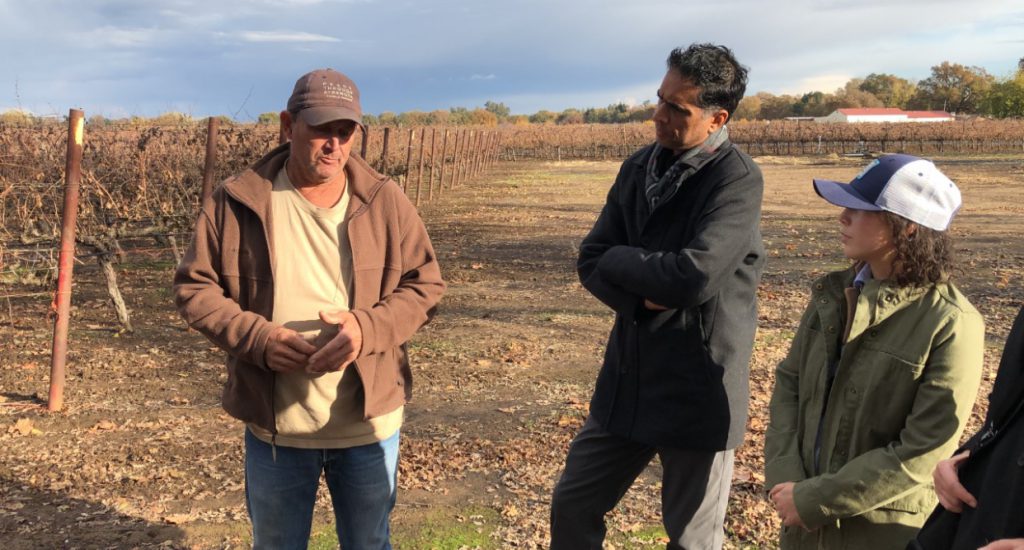The net benefits of composting and cover cropping were underscored as part of a Healthy Soils Week farm tour, as members of CDFA’s Office of Environmental Farming and Innovation (OEFI) and CalRecycle visited Spaletta Farm this week in Galt, California. The farm is a 65-acre property that produces walnuts and grapes.
“In the long-run, (composting) is good for the soil; there are savings in not needing as much fertilizer; it’s good for the plants; it’s good for the environment,” said farmer Pete Spaletta. “That we can utilize the waste materials and put it back in the soil – there’s nothing wrong with that.”
Indeed, composting and cover cropping are practices encouraged within the Healthy Soils Program for several co-benefits, including establishing pollinator habitats, reducing soil compaction, improving water infiltration, and preventing soil erosion, and water runoff. Soil erosion and water runoff are especially important for farms that are next to bodies of water, like Spaletta’s farm located near the Mokelumne River.
Established in 2016, the Healthy Soils Program stems from a multi-agency collaboration led by CDFA under the Healthy Soils Initiative. The objectives of the HSP are to increase statewide implementation of conservation management practices that improve soil health, increase carbon sequestration, and reduce greenhouse gas emissions. These objectives are achieved by providing financial incentives to California growers and ranchers to implement the practices.
Spaletta Farm is a 2020 Healthy Soils Program awardee. The project applies compost and mixed species cover crops once a year for three years, and annual soil samples are taken to evaluate success. These practices are expected to save more than 300 million metric tons of CO2-equivalent every year.
The Healthy Soils Program has awarded more than $100 million to more than 1,500 projects. The program is currently working on details for an additional $85 million that was allocated in the fiscal year 2022.



